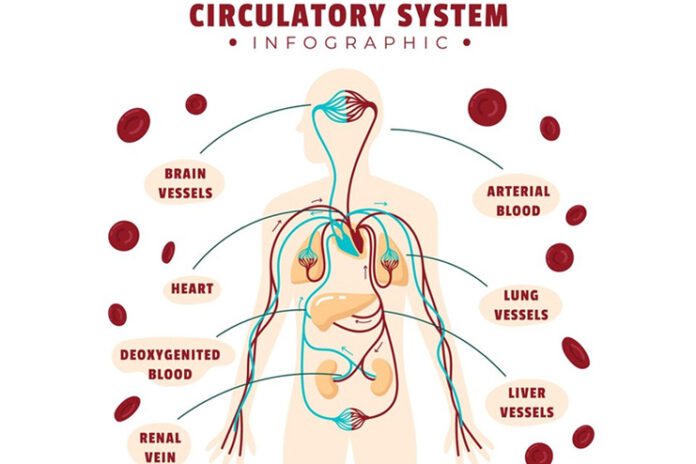Affiliate Disclaimer
Some links in this article are affiliate links. We may earn a small commission if you make a purchase through these links, at no extra cost to you. We only recommend products we find useful to our readersBlood is one of the body’s vital components. It maintains the organs and tissues by providing them with oxygen and vital nutrients.
Poor blood flow leads to fatigue, discomfort, and in worse-case scenarios, severe health threats.
Poor blood circulation is characterized by restricted blood flow, which leads to an inability of cells to receive adequate amounts of oxygen and nutrients. It isn’t a disease in itself but a symptom.
If you experience cold limbs, fatigue, or numbness, consult a doctor since poor blood circulation indicates other underlying health conditions.
Here are some of the most common causes, symptoms, and natural ways to improve and maximize blood flow in the body.
Causes of Poor Blood Circulation
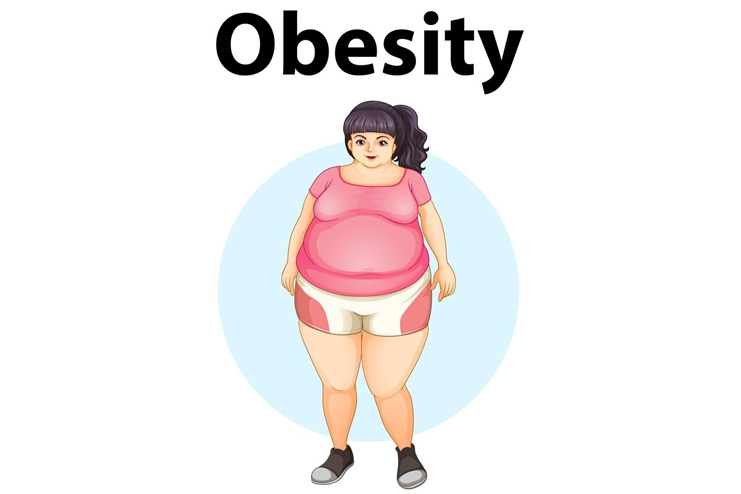
Some common causes of poor blood circulation are:
- Peripheral Artery Disease (PAD): This is a common reason behind the lack of streamlined blood circulation. It is commonly associated with atherosclerosis, in which the blood vessels narrow due to plaque deposition in and around them. This obstructs blood flow, thereby contributing to poor blood circulation. Treating the condition is essential because a sustained obstruction can result in strokes.
- Blood Clots: Another common reason for hindered circulation is obstruction in the blood vessels caused by blood clots. Depending on the clot’s size, these clots can restrict blood flow, either fully or partially. These clots complicate the situation as they can move in the blood vessels. If a blood clot in your leg breaks off and moves to a major organ, it could obstruct blood flow to that organ, causing hemorrhage or other problems.
- Diabetes: It also impacts blood circulation. Diabetic neuropathy contributes to reduced blood flow to parts of the body, especially the extremities. Additionally, people with diabetes are at higher risk for atherosclerosis, heart disease, and hypertension.
- Varicose Veins: These are enlarged veins, especially at the back of the legs. Because they are distended and swollen, the blood circulation rate drops. This condition heavily depends on genes; if you have relatives with this disease, you are more likely to be affected.
- Obesity: Being overweight is another contributing factor to poor circulation. Obesity can be a primary causative agent behind issues like varicose veins and problems with blood vessels.
- Raynaud’s Disease: It is a condition in which patients suffer from persistent cold hands and feet, mainly due to the constriction of the arteries in these areas, which results in obstructed blood flow and a lack of warmth in the extremities.
Symptoms of Poor Blood Circulation
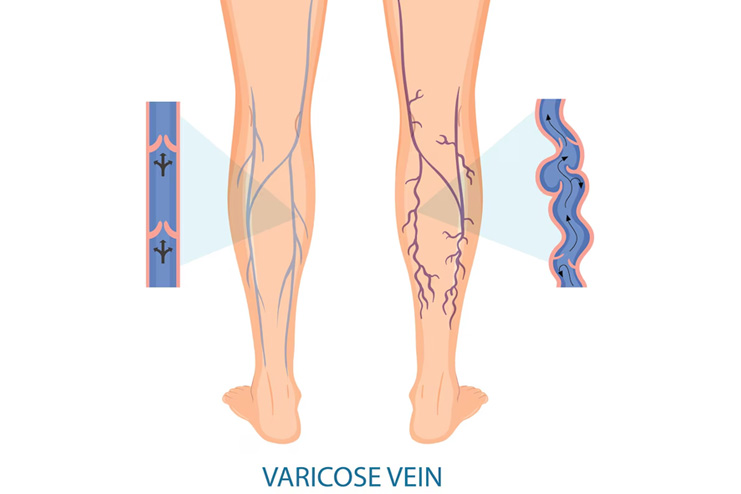
Poor blood circulation can adversely affect several organs, so it’s necessary to detect the symptoms before the situation gets out of hand.
Some common symptoms of poor blood circulation include:
- A numbing sensation in parts of the body
- Tingling sensation in the extremities
- Cold hands and feet
- Edema or swelling in parts of the body, especially in the extremities
- Functional impairments in one’s cognitive abilities
- Digestive issues
- Fatigue and constant tiredness
- Pale skin tone
- Ache in the joints along with muscle cramps
- Varicose veins
- Leg ulcers
How to Improve Blood Circulation
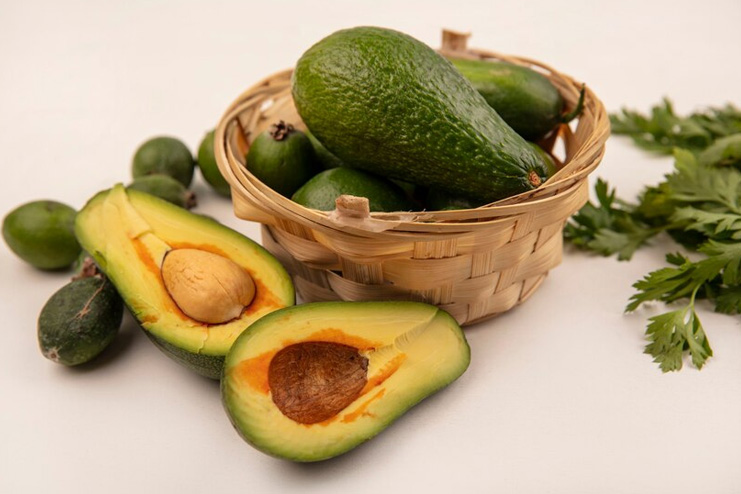
Improving your blood circulation is essential because untreated, poor circulation can contribute to life-threatening diseases. While there are medications and treatments that one can opt for, there are also many natural ways to improve blood circulation, which is what we’ll focus on.
1. Hydrate Yourself
Dehydration (R) is one of the main reasons behind blood circulation problems. Keeping your water levels in check ensures proper homeostasis of the body.
Staying hydrated contributes to proper blood flow by keeping blood vessels healthy.
2. Manage Stress Levels

When stress spikes, it can lead to hyperventilation (R), constricting blood vessels, which restricts blood (R) flow to other parts of the body.
Stress also impacts blood circulation by triggering the “fight or flight” response. This results in the release of stress hormones like cortisol and adrenaline. These hormones cause blood vessels to constrict, increasing blood pressure and reducing blood flow to the extremities.
Chronic stress leads to prolonged constriction of blood vessels. This strains the cardiovascular system, impairs circulation, and contributes to issues like high blood pressure, inflammation, and even damage to the blood vessel lining.
If you are seeking ways to improve blood flow, start with stress management.
3. Regulate Your Salt Intake
Salt plays a crucial role in managing the blood pressure levels in the body.
While excess salt consumption can cause hypertension, low salt consumption can lead to poor blood circulation because of low blood pressure.
Consult a doctor to check your blood pressure and seek advice on regulating your salt intake (R).
Adults should limit their daily consumption of salt to 2300 mg per day, equivalent to 1 teaspoon of salt.
4. Avoid Smoking

One of the primary causes behind poor circulation is blood clots, which can be a side effect of continuous smoking. Smoking (R) affects blood cells, degrading them and hindering circulation throughout the body.
If you want to combat poor blood circulation, start by cutting out this bad habit from your life.
5. Avoid Alcohol
Poor blood circulation is linked to binge drinking (R).
Consult your doctor to see if the alcohol has caused any sort of blood clots or not. Restrict yourself to drinking permissible quantities of alcohol and avoid binge drinking.
6. Use Essential Oils
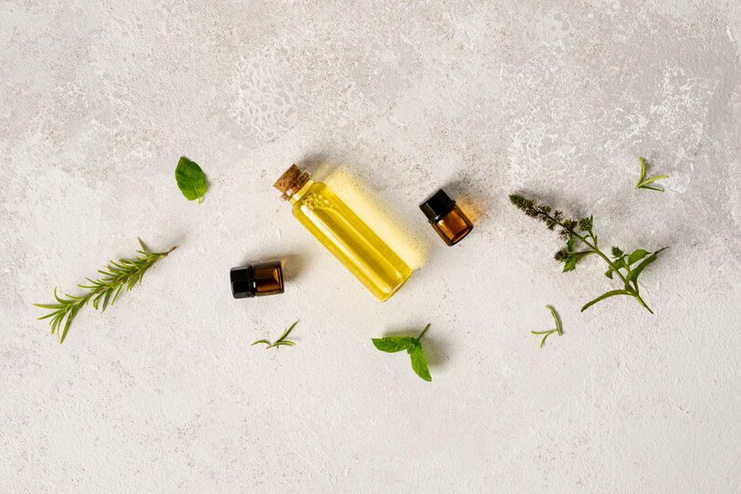
Now that we have the common lifestyle hazards out of the way, let us focus on the variants of essential oils that often tend to inflict positive effects in bettering the blood flow.
a) Rosemary Oil
Often regarded as the “herb of remembrance,” rosemary is an amazing herb for improving your blood circulation. Loaded with effective anti-oxidants, this herb has positive effects in the treatment of diseases like dementia and Alzheimer’s (R).
It is rich in antioxidants that aid in keeping the levels of free radicals in check. Though the presence of free radicals is not a primary cause of poor blood circulation, their oxidative damage can lead to inflammation and the hardening of blood vessels. These hardened blood vessels worsen blood circulation.
The oil is best used topically on the parts of the body that are more prone to being affected due to poor circulation. You can even infuse some ginger into it to get better results in terms of improved circulation.
b) Ginger Essential Oil
Ginger has thermal properties that warm up the blood vessels and cells, thereby boosting blood circulation.
Ginger oil also possesses antioxidant properties (R), which are beneficial in flushing the toxins out of the body and ensuring that any form of inflammation is in check.
For effective results, massage ginger oil and ensure it thoroughly permeates the skin to improve blood circulation.
c) Eucalyptus Oil
Eucalyptus oil has vasodilating properties that promote blood circulation (R), making it particularly effective for alleviating symptoms of poor blood flow, such as persistent tiredness and fatigue.
When applied, eucalyptus oil helps to expand and relax constricted blood vessels, allowing blood to flow more freely throughout the body and addressing issues related to poor circulation.
7. Exercise More

Exercise effectively boosts not just blood circulation but also contributes to overall health. A good exercise routine helps improve blood flow by ensuring the proper functioning of the blood vessels and other body organs.
a) Jogging
Jogging can boost one’s cardiovascular system, contributing to overall blood circulation.
A study (R) conducted in 2003 deduced that doing exercises like jogging and running boosts the body’s capability of taking in oxygen. It dilates blood vessels and makes blood circulation easy and efficient.
According to experts, it is best to jog continuously for at least 15-20 minutes to experience the results.
b) Yoga
Yoga may seem like a gentle form of exercise, but when practiced correctly, it can offer significant benefits for improving blood circulation and addressing related health issues. The mindful stretching and twisting in yoga poses help compress and decompress blood vessels (R), especially veins, encouraging better blood flow throughout the body.
Some of the most effective yoga poses for improving the blood flow include:
- Virabhadrasana or the Warrior Pose
- Salamba Sarvangasana or the Shoulder Stand
- Viparita Karani or the Leg’s Up Pose
- Shavasana or the Corpse Pose
- Kapalbhati or Skull Shining Breath
Foods That Improve Blood Flow
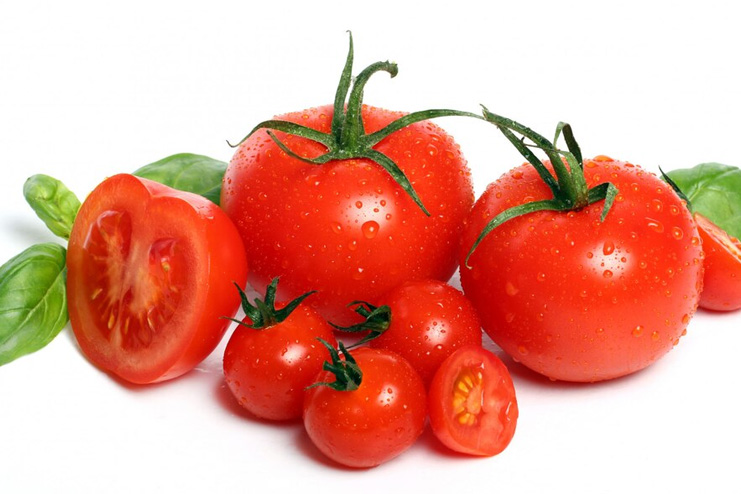
Apart from making some changes in your lifestyle, several foods offer natural ways to improve blood circulation. Some of them include:
8. Hawthorn Berries
Hawthorne berries have amazing benefits in the dilation of the blood vessels (R) near the surface of the skin which aid in better blood flow. This helps stabilize blood pressure (R) and brings it back to normal to ensure normalized blood circulation.
People with congestive heart failure (R) have also been evaluated with the consumption of hawthorn berries to improve overall blood circulation.
Consult a professional for dosage because the recommended dosage varies based on the person, their physiology, and medical history.
9. Tomatoes
Tomatoes indirectly contribute to boosting blood circulation (R). Consumption of tomatoes reduces the accumulation of cholesterol and fat in the body and the blood vessels, thereby decreasing its deposition in the blood vessels, which otherwise obstruct the steady flow of blood.
For best results, consume tomatoes daily, either as a part of a salad or curries you prepare. Including this in your daily diet will combat the risks of poor blood circulation in the long run.
10. Nuts
Nuts, particularly almonds, and walnuts (R), are packed with vitamins A, B, C, and E, which collectively contribute to overall health. Regular, moderate consumption of these nutrient-rich nuts can significantly enhance blood circulation by reducing inflammation and combating oxidative stress, often triggered by free radicals in the body.
Incorporating 2-4 almonds and 1-2 walnuts daily can support healthy circulation and promote optimal body function.
11. Parsley Tea
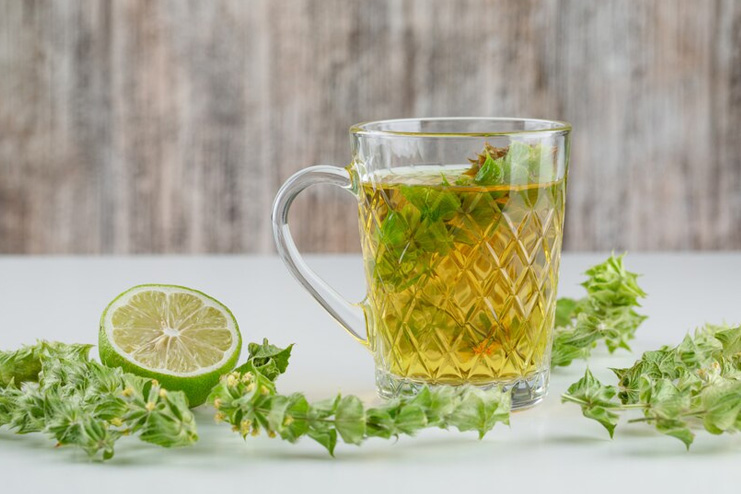
Parsley tea has unmatchable benefits in improving blood circulation. This culinary herb has vasodilating properties that aid in expanding the blood vessels and promote better blood circulation.
Vitamin B12 and Vitamin C in the parsley leaves contribute further to the process.
For consumption, steep a few sprigs of parsley leaves in hot water for 5-10 minutes. Strain the liquid and enjoy the concoction at least twice a day. You can even opt for store-bought parsley tea to enjoy similar benefits.
12. Green Tea
Green tea helps improve the rate of blood circulation in multiple ways. The rich concentration of antioxidants in green tea (R) not only helps combat excess oxidative stress in the body but also helps relax the arteries.
Consumption of green tea also contributes to increasing the levels of nitric oxide in the body, which has positive vasodilating effects. It helps expand the blood vessels which helps improve blood circulation.
For optimum benefits, steep a green tea bag in warm water and let it steep for 5 minutes. Drink this tea 2-3 times a day to promote good blood circulation.
13. Celery
Celery (R) is rich in water content and loaded with beneficial vitamins and minerals. The concentration of Vitamin K stands out.
Vitamin K promotes smoother blood flow, which reduces the possibility of blood clotting and protects the body from conditions associated with strokes or other cardiovascular diseases.
Celery is also beneficial as a diuretic, which helps flush out unnecessary waste from the body. This ensures that your body isn’t loaded with unwanted and toxic wastes that could otherwise inflict negative effects on it.
You can blend it into a green smoothie, eat it raw with any form of dip, or even eat it as a salad.
14. Ginkgo Biloba
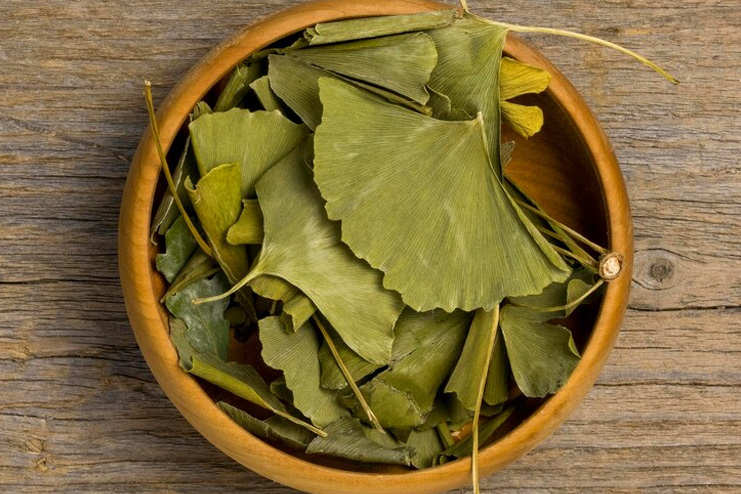
The extract and supplements of Ginkgo Biloba have promising benefits in improving blood circulation (R). This plant is known for its amazing blood thinning and vessel dilating (R) properties which come in handy in improving your blood circulation.
Its consumption, in the form of extracts or supplements, completely depends on the doctor’s prescriptions and recommendations.
15. Garlic
Garlic has amazing benefits in getting rid of the buildup of plaque in the arteries that often contribute to improving reduced levels of blood circulation (R).
It not only looks after the overall cardiovascular health but also prevents blood platelet aggregation and prevents the possible risks of atherosclerosis.
For long-term benefits of garlic, especially for improving your blood circulation, start with consuming 2-3 cloves of raw garlic every day. You can include them in your cooking or take them as supplements.
16. Avocados
Avocados have a high concentration of beta-sitosterol, which aids in converting unhealthy fats into something better suited for the body. It also has anti-inflammatory properties, which help treat any form of inflammation that could be restricting blood circulation.
Avocados improve the health of arterial walls, leading to improved blood circulation. It prevents plaque accumulation in and around the arteries, keeping the possibility of blood clots at bay.
You can consume avocado as a dip, in salads, in sandwiches, or even just eat it on its own. Increase the intake of avocados to combat poor blood circulation. You can even opt for avocado oil (R) to improve your overall cardiovascular health.
17. Cinnamon

Cinnamon plays a powerful role (R) in preventing excess cholesterol buildup, helping reduce the risk of arterial blockages or clots. This action promotes steady blood circulation and supports cardiovascular health.
Additionally, cinnamon’s anti-inflammatory properties relieve excess strain on the heart. Ceylon cinnamon, in particular, can aid in regulating blood pressure, which further improves blood flow and overall heart function.
Mix half a teaspoon of ground cinnamon and one teaspoon of honey in warm water. Drink this every morning on an empty stomach for best results.
[Read: Cinnamon and Honey Benefits]
18. Cayenne Peppers
Capsaicin, a compound in cayenne peppers, effectively boosts blood flow throughout the body. If you experience symptoms of poor circulation, incorporating cayenne pepper into your diet may be beneficial.
Consuming cayenne peppers also strengthens blood vessels (R) and arteries, promoting smoother blood flow.
Mix 1 teaspoon of cayenne pepper in a glass of water and drink it to help enhance blood flow.
19. Coconut Oil
Coconut oil is primarily made up of healthy fats and medium-chain triglycerides which make it an ideal ingredient to regulate blood flow (R). It also helps relieve inflammation in the arteries thereby aiding in better blood circulation.
You can consume up to two tablespoons of edible coconut oil daily or massage your entire body with warm coconut oil to boost your blood circulation.
20. Dark Chocolate
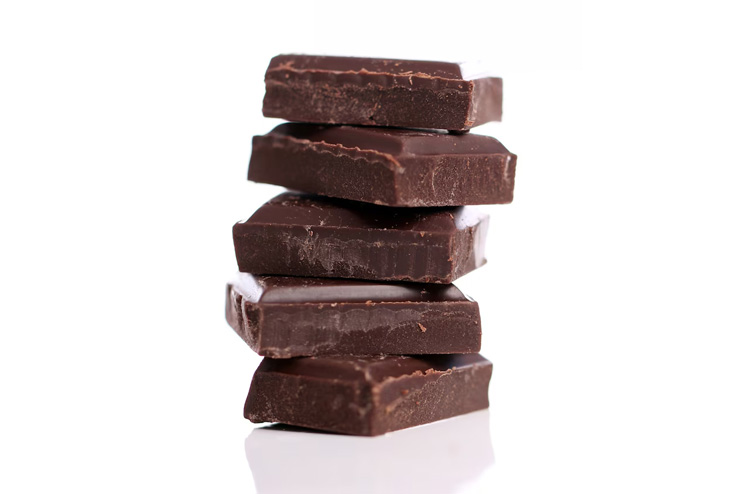
Research shows that the polyphenols present in dark chocolate effectively raise the levels of nitric oxide in the body, which is responsible for the dilation of the arteries in the body and promotes blood circulation.
Munch on 2-3 pieces of dark chocolate to improve blood circulation.
Conclusion
Blood circulation plays a crucial role in delivering oxygen and nutrients to all parts of the body, supporting energy levels, cognitive function, and organ health. Poor circulation, which can be caused by various underlying health conditions, manifests in symptoms like cold hands and feet, fatigue, and numbness, which should never be ignored.
The natural methods above, such as staying hydrated, including specific foods, incorporating essential oils, and adopting a regular exercise routine, can help improve circulation effectively.
Prioritizing these habits can positively impact your circulatory health and enhance your quality of life. Remember, if symptoms persist, seeking medical advice to address any underlying conditions affecting your blood flow is vital.
-
July 2018Written by Somapika D
-
Nov 2024Edited by Ankita
In this Article















